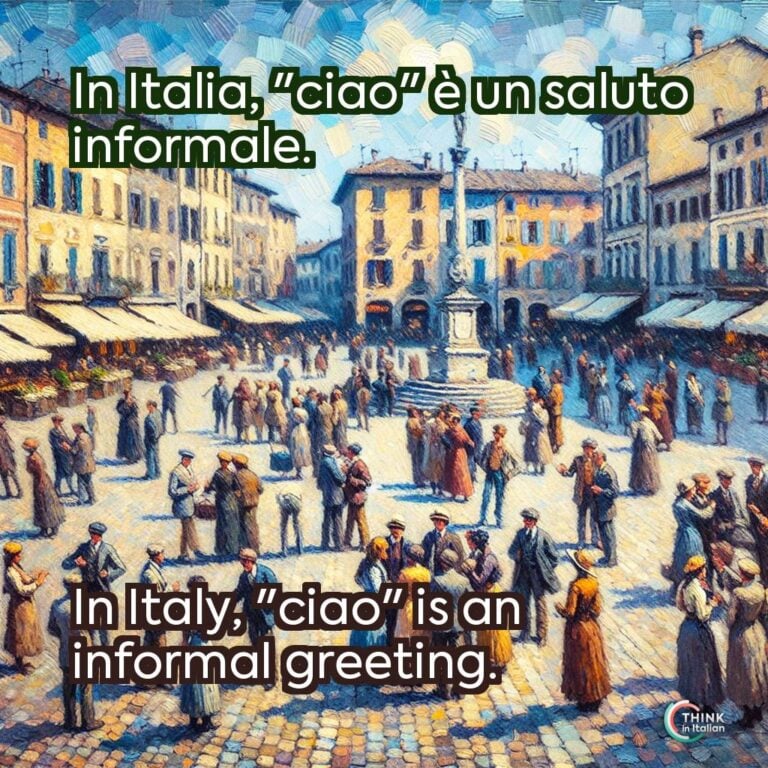The Italian “Ciao”
Meaning
If you’ve ever interacted with Italians or watched a movie set in Italy, I am sure you have heard the word ciao at least once. It is also the title of the very famous Italian song Bella ciao!
I think ciao is one of the most common Italian words used worldwide. In fact, it is used in many other languages, too! But what does it really mean?
As simple as it is, the Italian word ciao means “hi”, “hello”, but also “bye”, but it has not always been like this. Let me guide you through its evolution over the years.
The Origins
One of the things I love the most about languages is their history, and, for me, the history of Italian is one of the most fascinating.
The word ciao wasn’t always used as a greeting: it comes from the Venetian expression s-ciào vostro, meaning “I am your servant” or “at your service”.
Back in the 17th century, this phrase was a polite way to address someone, expressing respect and readiness to help. Over time, it was shortened to simply s-ciào and finally to ciào.
The word has then lost its servile connotations to become a standard informal greeting, replacing more formal ones in many everyday contexts. Finally, after the unification of Italy, the word ciào spread throughout Northern Italy and, later, across the nation.
How to use “Ciao” in Italian
Informal Hellos and Goodbyes
The Italian word ciao can be used both as a greeting or farewell. In fact, unlike other languages, Italian uses ciao interchangeably for both “hello” and “goodbye”.
In both contexts, it conveys a nuance of informality. In fact, you shouldn’t use it in formal situations or with people you don’t know well.
When you say ciao to greet someone, it is similar to saying “hi” in English, and when you use it as you are leaving a place or one or more people, it is similar to saying “bye” or “see ya”.
Mind the Context
As I mentioned before, one of the most important things to remember about ciao is that it’s informal. You wouldn’t walk into a business meeting and greet the CEO with a casual ciao.
Italians value a sense of respect and hierarchy, especially in professional or unfamiliar settings. Therefore, make sure you know how to say “hello” in Italian in formal contexts as well.
For instance, you might want to use formal greetings like buongiorno (good morning) or buonasera (good evening), and leave ciao to friends, family, and colleagues you know well.
Add Ciao to Your Vocabulary
If you’re learning Italian, using ciao is one of the easiest ways to start sounding like a local. Observe how Italians use it, especially in different social contexts.
By paying attention to these nuances, you’ll not only learn when to use ciao but also how to incorporate it smoothly into your interactions.
This simple greeting word captures much of what makes the Italian language so enchanting: warmth, friendliness, and a sense of connection. Whether you’re starting or ending a conversation, this word helps create a bond between people.






